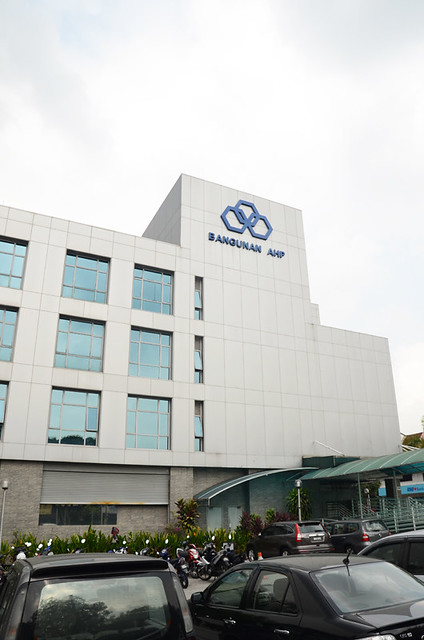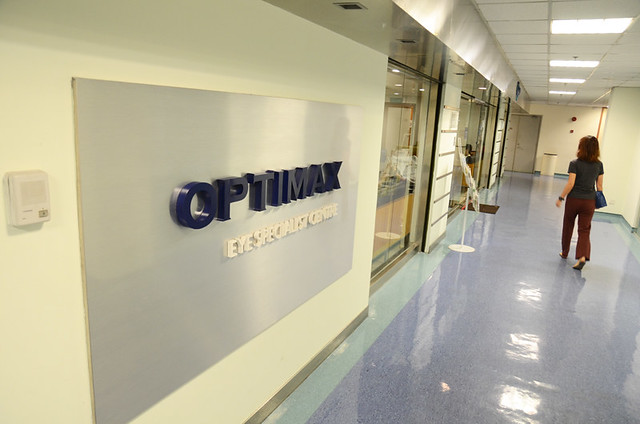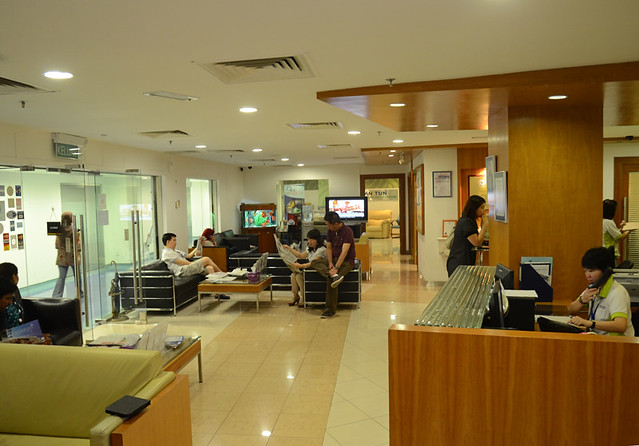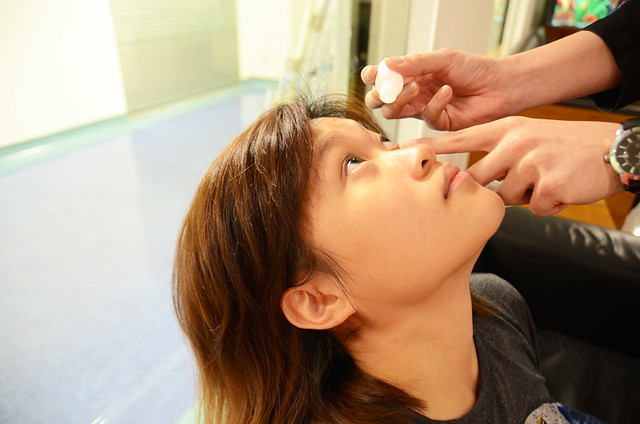Many years ago when I was in college, I participated in one of World Vision Malaysia’s famous 30-Hour Famine events. At that time, my knowledge of hunger issues was sparse at best and was limited to pictures of emaciated African children covered in flies.
It wasn’t nice to know that there were kids starving on the other side of the planet but it wasn’t that difficult to feel indifferent either. Living in Kuala Lumpur, constantly surrounded by never-ending supply of delicious, calorie-laden food – it really was quite easy to push grand issue like global hunger to the back of my mind.
In fact, I was only motivated to fast for 30 hours for some vanity driven weight loss. Not because I felt sorry for skinny, bloated bellied children. Sorry.
A few weeks ago, I followed World Vision Malaysia to Vietnam to check out the communes that are affected by poverty & hunger. Again, instead of anything remotely gracious, I was motivated by a free trip to Vietnam.
Wow, what a major a-hole; me.
Lo & behold, I was exposed to situations of poverty & hunger that I never thought existed. It was truly an eye-opening experience. This time, instead of just glancing pass pictures or visuals in the idiot box, I was actually there – seeing, smelling and feeling their lives.
I was quite affected by what I saw, rendering me in a constant struggle between guilt and gratitude.
The first family we visited lived at a bottom of a steep hill in the Tan Mai commune, 5 hours drive from Hanoi. The family consists of Toan, both his parents, his younger brother, Tinh and grandmother.
# – Toan and his family.
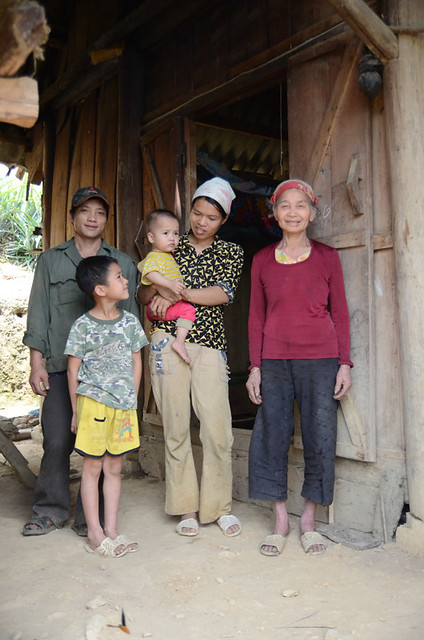
We had to walk down the precarious “steps” to reach the house. Several times, some of us slipped and only managed to stay alive by holding on to some small shrubs. After what seemed like an eternity, we reached the house.
# – Scary walking down a steep hill.

The house was quite spacious but there was no floor – just dirt. The wooden walls were suspended from the ground so in the rainy season, it can get pretty nasty.
# – The floor is really the soil.
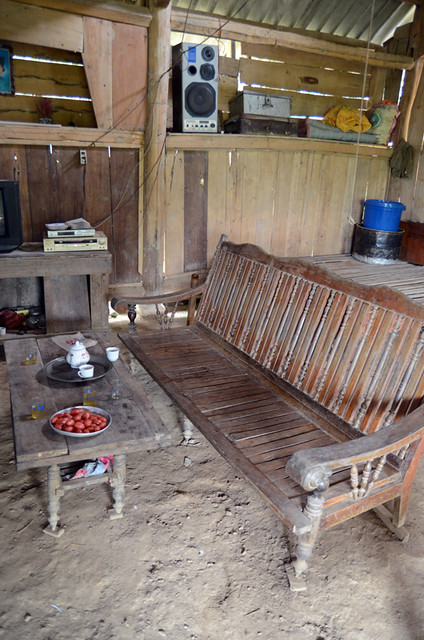
Toan’s parents are both farmers, earning about RM2800 a YEAR from selling bamboos, maize and cassava!
Recently, Tinh, the baby brother suffered from muscle inflammation and had to be treated at the hospital. Luckily, the family managed to borrow about RM3000 from relatives for surgery fees.
How they’re going to repay 1 year worth of income is beyond me :(
# – Baby Tinh and his mummy.

Tinh’s muscles are okay now, but his bones are still not joined properly so he still couldn’t walk. The family would need more money to treat his leg.
After that, we went to check out their family farm. I did not expect it to be on the side of a freaking hill.
There was no walking path, no safety rope, nothing, it was scary. I only made it half way up because I knew if I managed to reach the top I would need a helicopter to bring me back down later on.
I just couldn’t walk back down without panicking. I can’t imagine how it’s like in the rainy season.
# – The farm atop a hill.
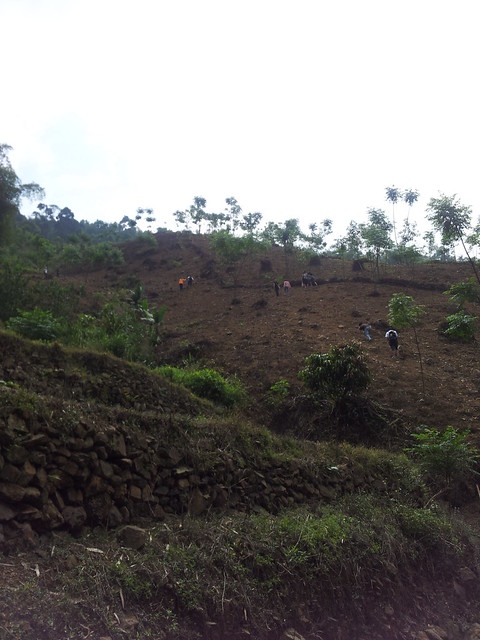
It’s heart-breaking to know that Toan and Tinh’s parents have to risk their lives everyday just to go to the farm just so they could earn a meagre RM2800 every year. It’s ridiculous but it’s their reality.
The next day, we visited Trang and her family. Her father’s whereabout was a mystery and all she has now are her mother and maternal grandparents. Trang’s mother is suffering from a mysterious eye disease which has rendered her almost blind. Her grandfather, on the other hand is completely blind.
# – Little Trang and her family.
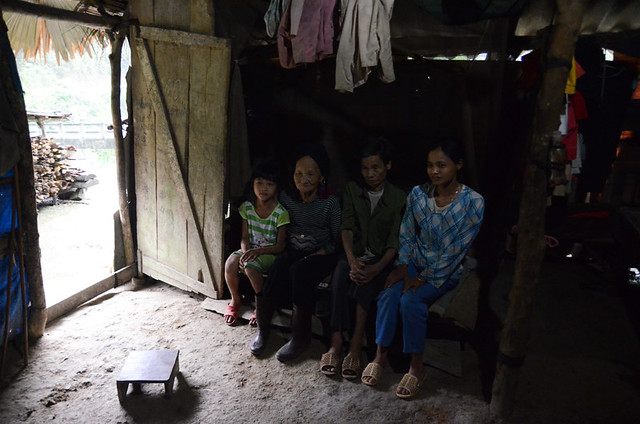
Of the entire trip, seeing Trang’s family was the most gut wrenching. They live in a little hut by a river, which floods up in the rainy season. Half the family is in ill health (mother and grandfather) and the other half either too young (Trang) or too old (grandmother).
Everyday, they eat a little bit of rice and mostly bamboo shoots. Having fish would be considered as a good day.
# – The hut by the river they call home.

# – Tarp for walls.
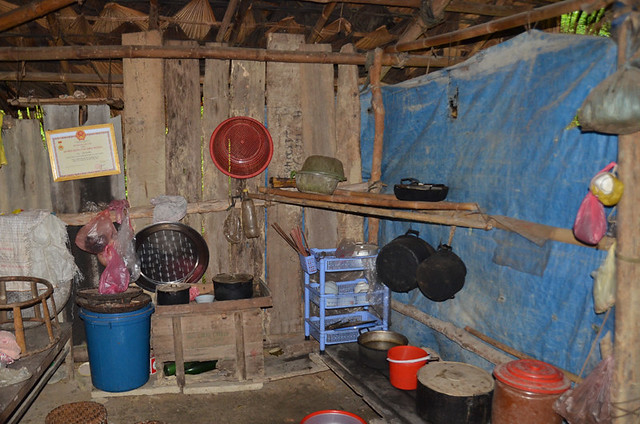
When we asked Trang what she wants to be when she grows up…she said doctor. We asked her why, she shyly said she wanted to cure her mother, grandfather and help people in the village. I almost burst into tears.
Thankfully, Trang gets to go to school as her grandfather gets paid pension of about RM140 every month. The entire family practically relies on his pension.
Both these families are examples of the people affected by hunger & poverty in Vietnam. Some areas have poverty rate of up to 85%, it is unnerving!
World Vision Vietnam first identifies these areas and then sets up ADP (Area Development Program), which will then provide long term community development programmes.
For instance, World Vision drills wells, protects water sources and installs piping systems so that these communities can have access to clean water and good sanitation systems.
# – A view of an advanced water filtration system installed at a pre-school with donations raised by World Vision Korea.
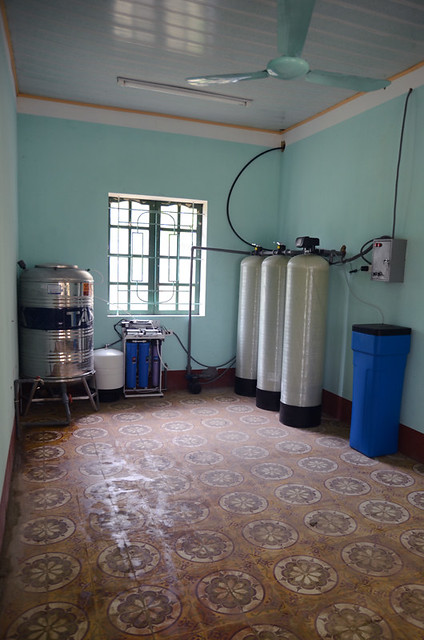
World Vision also provides prenatal and natal care, children’s vaccination and treatment, HIV/AIDS awareness and counseling sessions and training for health workers & parents to recognise and deal with illnesses.
# – Parents getting their children weighed at a Health Station set up by the government with help from World Vision.
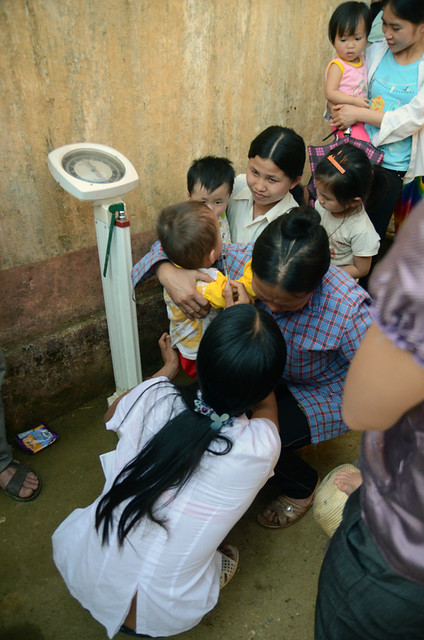
# – Young mothers learning about diarrhoea prevention in nutrition club.
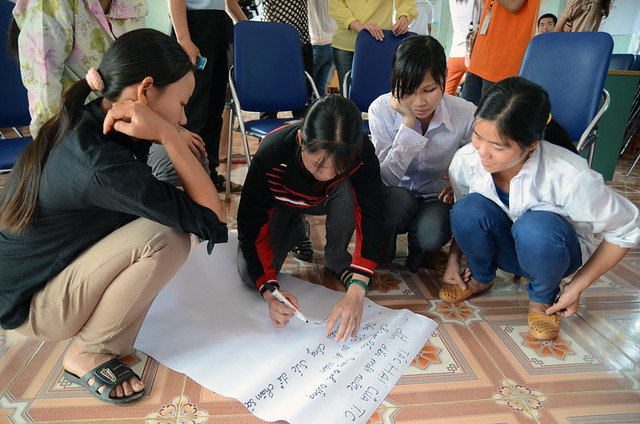
Besides that, seeds, tools and training are provided to the community by World Vision so that they can secure its own food supply.
By teaching adults how to earn a stable income through provision of micro loans and income generating skills training, their children get to stay in school and further their education. In terms of education, World Vision helps the communities to build schools and train teachers.
# – A typical school classroom in rural Vietnam (in fact almost 100% of the children get to go to school).
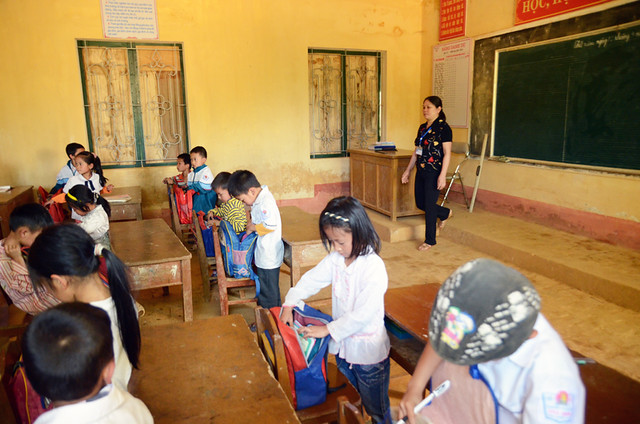
Not only all these programmes help these communities to be self-sufficients, death rates from diseases and impoverishment can be drastically cut down. We had the opportunity to visit a family that has benefited from these long term community development programmes.
# – Baby Hoa with her mother, Sen and father, Thanh. They are one of a few “pilot families” who participated in community development programmes.
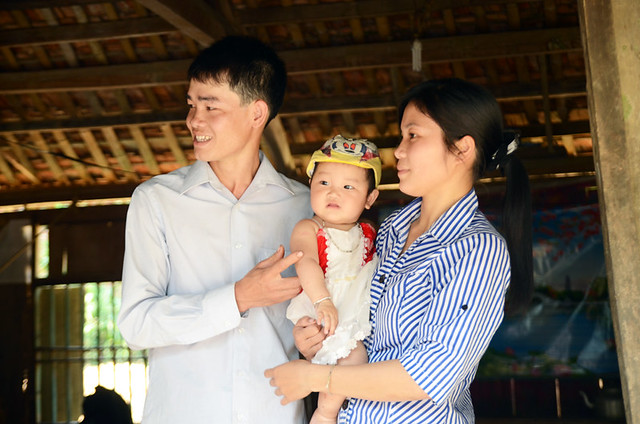
Hoa now weighs 9kg thanks to her mother’s Sen diligent application of nutrition knowledge she learnt through World Vision provided training and classes. Their
household income has also increased from RM3000 a year to about RM6000 a year as Thanh, the father took part in training courses on livelihood and economic development.
He learnt to plant rice and maize in a more effective way, and also learnt how to treat diseases of the crops. The family is also raising pigs which they have bred from a single pig gifted by World Vision.
I hope families like Toan’s and Trang’s one day will enjoy self-sufficiency and comforts such as Hoa’s. Judging from the passion and dedication of World Vision, I have no doubt they will benefit from all the programmes and assistance.
You too can contribute by doing either the following:
Thank you World Vision Malaysia for opening up my eyes.

